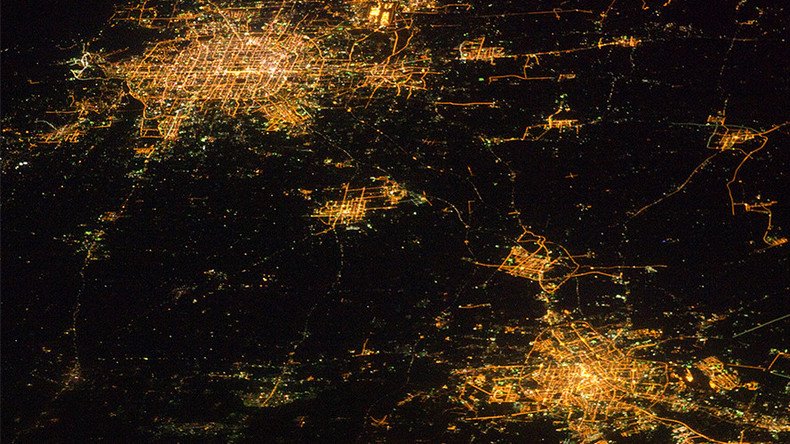China’s nighttime lights reveal surprising tempo of economic growth

Official economic data from China may substantially underestimate the actual performance of the country, according to the latest report by the Massachusetts-based National Bureau of Economic Research (NBER).
The authors of the study used an unusual method of using satellites to track and record nighttime lights in China as an indicator of the state of the world’s second-largest economy.
According to the research, the Chinese economy is performing better than official data indicates.
“We see that our methodology predicts Chinese GDP growth to have been lower than official estimates before the crisis of 2008, to have experienced a shallower decline in 2008 and a stronger recovery in 2009 and 2010, and to have stabilized at a higher level after 2011,” the economists say.
The paper says that across the 11-year period under consideration predicted Chinese growth appears to be on a flat trend, while the official growth estimates are on a declining trend.
The predictions disclosed by the analysts for past Chinese growth agree, at least in spirit, with some market participants’ estimates.
“For example, our index agrees with both the Barclays and the Bloomberg indices in estimating Chinese growth to have been around eleven percent in 2007, and not to have experienced a substantial spike before the financial crisis, while the official GDP series records growth as spiking from 12 to 15 percent between 2005 and 2007. However, our predictions for current Chinese growth rates are above those of market participants, as well as of the Chinese government itself,” the report says.
#China may increase #gas imports 500% by 2030, striving to cut emissions https://t.co/88rUJYv1l7
— RT (@RT_com) August 4, 2016
The economists, New York Fed’s Hunter Clark and Maxim Pinkovskiy, as well as Columbia’s Xavier Sala-i-Martin, do not reveal why Chinese officials understate the economic performance.
“One explanation consistent with our results could be if Chinese national accounts understate the growth rate of services, which would progressively understate growth as services become a larger fraction of the Chinese economy,” they say.
China to invest $450 billion in agriculturehttps://t.co/R8oK5cnaDk
— Aki Paloheimo (@OmglolU) March 6, 2017
This is interesting
Data on nighttime lights is maintained by the National Oceanic and Atmospheric Administration and is publicly available. Some other studies of the kind show the difference between North and South Korea, a sample of African villages and the economic fluctuations during the Asian financial crisis.
The agency says lights are highly correlated with measures of economic activity regarding levels as well as growth rates.













